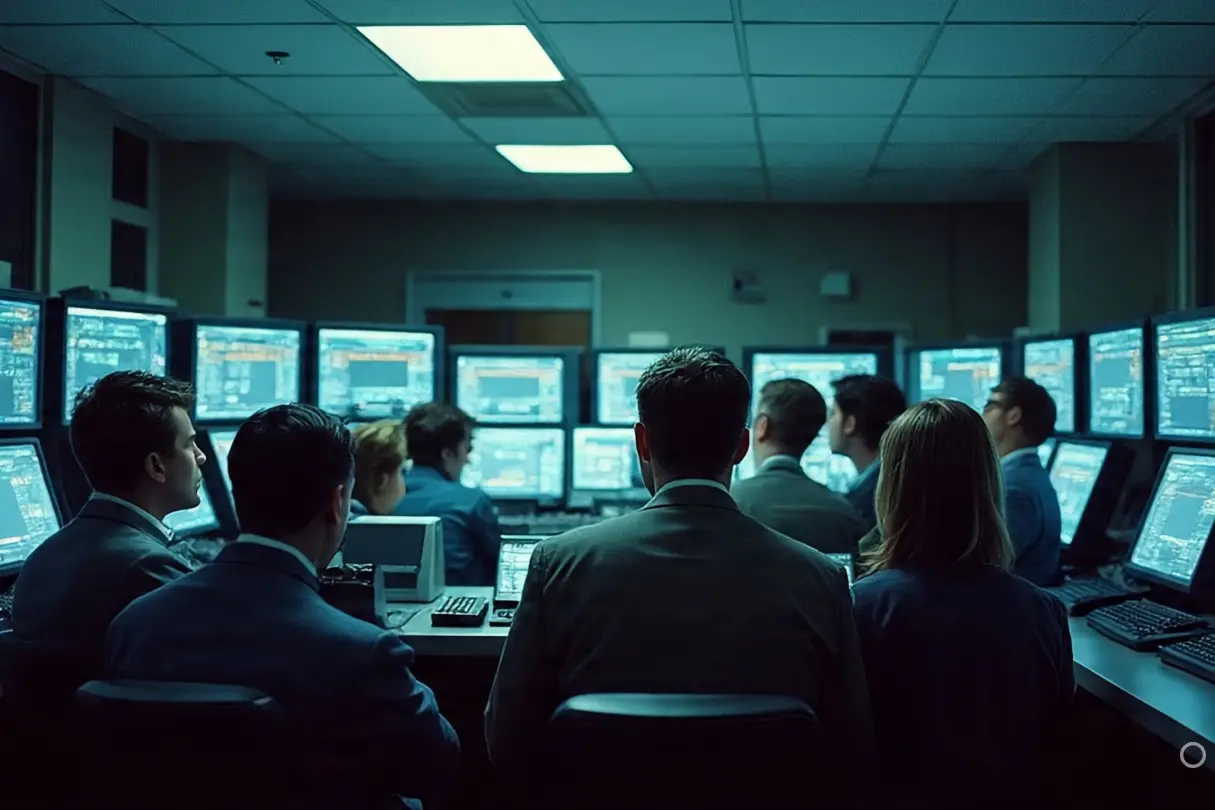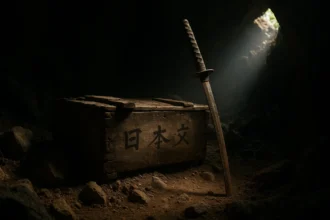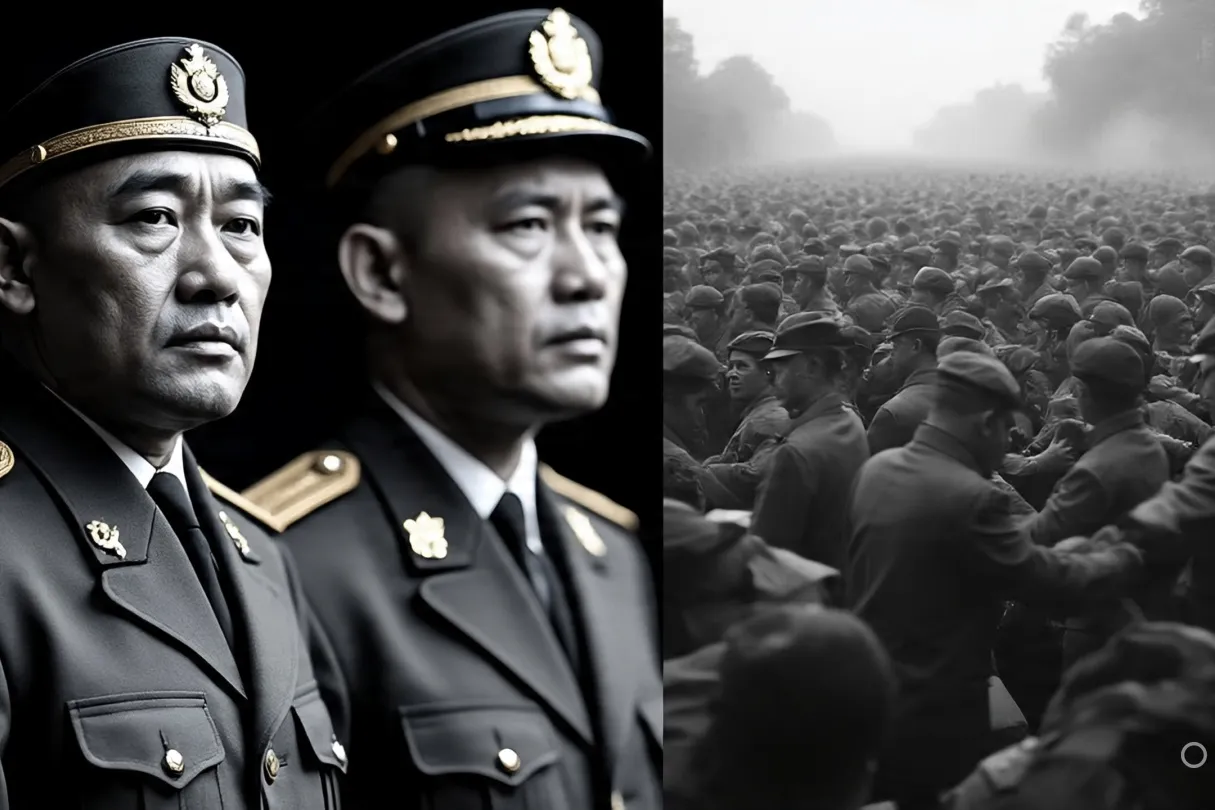🧨 The World Was Terrified the Apocalypse Was Coming
In the late 1990s, a chilling phrase echoed across boardrooms, newsrooms, and dining tables: the Y2K bug. It wasn’t a summer movie plot—it was a real-world computer glitch that had the potential to trigger chaos across the globe. The U.S. Senate labeled it a worldwide crisis. President Bill Clinton appointed a dedicated task force, with one simple instruction: “Don’t let the world stop.”
- 🧨 The World Was Terrified the Apocalypse Was Coming
- 🕹️ A Tiny Code Problem with Global Consequences
- 🧬 How Deep Did the Problem Go?
- 💣 Nuclear Nightmares and Doomsday Fears
- 💼 The Business of Surviving the Bug
- 🧎♂️ The Rise of Y2K Doomsday Cults
- 🖥️ The Reality of the Bug—and the Massive Fix
- 🥫 Soup, Scams, and Skepticism
- 🔚 From Code Error to Cultural Memory
What followed was a mix of genuine concern, media hysteria, bizarre survivalism, and government intervention on a scale never seen for a software bug. It all began with a tiny oversight buried deep in the code of millions of machines.
🕹️ A Tiny Code Problem with Global Consequences
The root of the problem was simple: when computers were first programmed back in the 1960s through the 1980s, engineers saved memory space by recording years with only two digits. So, instead of “1983,” systems would log “83.” At the time, memory was expensive and no one anticipated these systems would still be in use decades later.
Fast forward to 1999. With the new millennium approaching, tech professionals realized something terrifying. When computers hit January 1st, 2000, they might interpret the year “00” as 1900 instead of 2000. That single confusion could crash banking systems, scramble medical records, ground planes, and even set off nuclear weapons.
🧬 How Deep Did the Problem Go?
By the late ’90s, nearly every aspect of daily life relied on computers—from elevators to hospitals, microwave ovens to missile defense systems. Over 40 billion computer chips were in use globally, and most were not programmed to recognize the year 2000.
Predictions spiraled. What if prison doors opened automatically, unleashing violent criminals? What if aircraft navigation systems failed midair? Could money lose its value overnight, forcing people to barter with toilet paper? Would nuclear early warning systems mistake a peaceful sunrise for a missile launch?
💣 Nuclear Nightmares and Doomsday Fears
While many fears were overblown, some weren’t far-fetched. Countries like Russia and the U.S. had thousands of nuclear warheads on alert. If even one early warning system misfired, it could start a nuclear war. Each weapon depended on flawless software, and no one was entirely confident the systems would hold.
As media coverage intensified, anxiety turned to hysteria. NBC even aired a made-for-TV movie, Countdown to Chaos, that visualized planes falling from the sky and cities engulfed in fire. Banks begged networks not to air it. NBC aired it anyway.
💼 The Business of Surviving the Bug
Capitalism wasted no time. As fear spread, a multi-million dollar industry emerged almost overnight. Companies like Preparedness Resources sold Y2K survival kits containing flashlights, radios, and emergency food. Some people built their own kits—one man in Wisconsin bought a generator for over $100,000 and stocked up on food worth $1 million. Sales of canned goods, bottled water, and firearms exploded.
The gun industry joined in. Special edition Y2K weapons hit the market, while ammunition flew off shelves. Others dug underground bunkers, trained in wilderness boot camps, and adopted large guard dogs. Some even treated it like divine prophecy.
🧎♂️ The Rise of Y2K Doomsday Cults
Religious groups saw Y2K as a sign of the End Times. Cults moved to remote towns. Followers quit their jobs, sold their homes, and donated everything to churches. The FBI grew concerned. If the apocalypse didn’t happen, would some cults turn violent? Agencies tracked online forums, monitored chat rooms, and prepared for New Year’s Eve like it was Judgment Day.
🖥️ The Reality of the Bug—and the Massive Fix
And then… nothing happened.
As midnight hit New Zealand, the world held its breath. But the lights stayed on. One by one, time zones rolled over into the year 2000, and nothing catastrophic occurred. No planes crashed. No power grids failed. The apocalypse never came.
But that wasn’t luck. Governments and businesses around the world had spent hundreds of billions of dollars to upgrade systems. The U.S. alone spent $100 billion. IT teams worked 70-hour weeks, rewriting millions of lines of code. President Clinton even brought retired COBOL programmers out of retirement. Silicon Valley doubled work visas to meet demand.
Thanks to that effort, the doomsday clock was defused.
🥫 Soup, Scams, and Skepticism
Still, not everyone walked away satisfied. Stores were flooded with unsold Y2K books. People had to eat stockpiles of canned soup for years. Some called the whole thing a scam. One executive grumbled, “I signed off on $20 million and didn’t hear one thing.” Others believed it was the greatest global tech fix in history.
There were weird bugs, though. A baby in Denmark was registered as 100 years old. A New York video store tried to fine a customer $91,000 for a movie returned “a century late.”
Whether it was a masterstroke of prevention or a massive overreaction remains debated. But one thing is clear: the Y2K bug was real. The panic? Maybe a little too real.
🔚 From Code Error to Cultural Memory
Y2K lives on as a reminder of just how much we depend on technology—and how easily it can turn against us. It’s also a case study in crisis management. A glitch that started with saving two bytes of memory became one of the most expensive and talked-about non-events in human history.
For months, the world thought it might end. It didn’t. But that fear revealed our digital vulnerability. It showed how easily trust can erode when the systems we rely on seem fragile.




